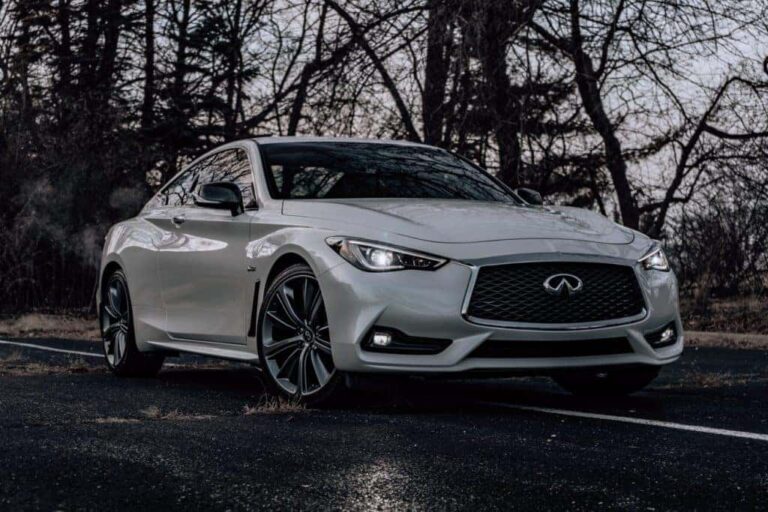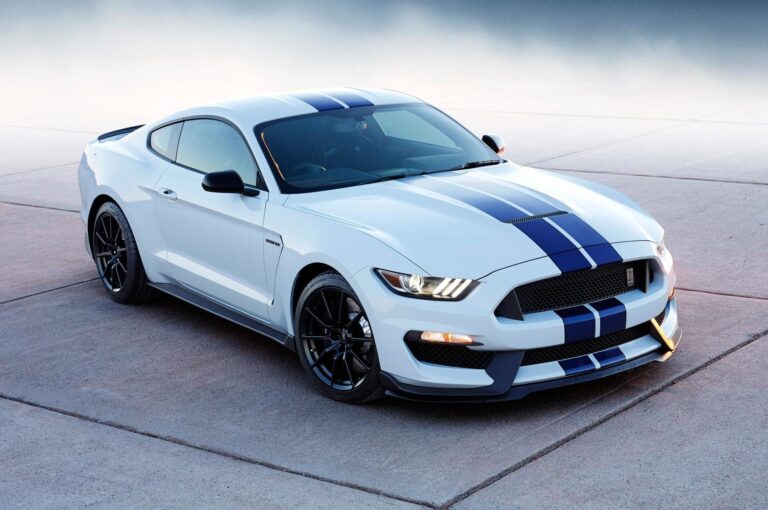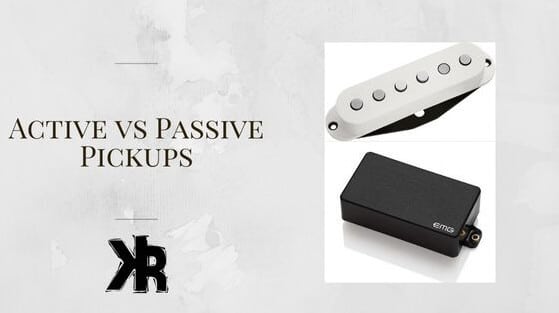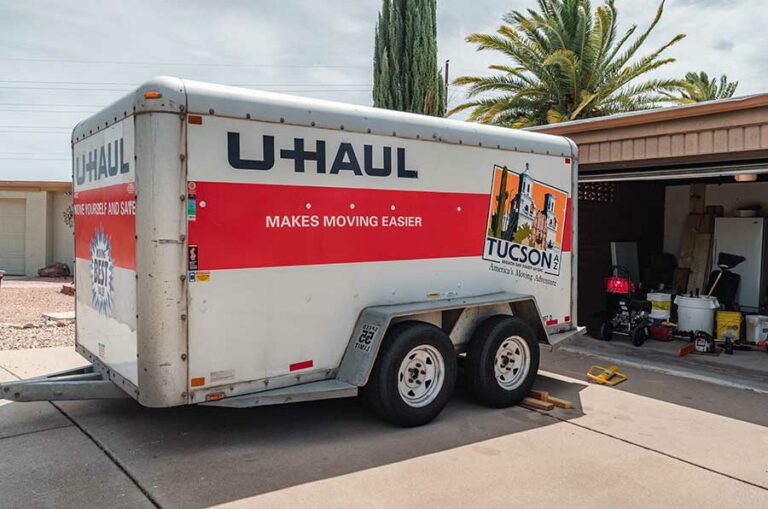Will My Topper From GMC Fit My GMC? A Comprehensive Guide to Truck Cap Compatibility
Will My Topper From GMC Fit My GMC? A Comprehensive Guide to Truck Cap Compatibility cars.truckstrend.com
For many GMC truck owners, a truck topper – also known as a camper shell, truck cap, or bed cap – is an indispensable accessory. It transforms the open bed into a secure, weather-protected cargo area, perfect for tools, camping gear, or even an impromptu sleeping space. However, the question of whether a topper from one GMC truck will fit another GMC truck is far more complex than a simple "yes" or "no." It’s a common dilemma for those looking to save money by purchasing a used topper or upgrading their truck while keeping their existing cap.
This comprehensive guide will demystify the intricacies of GMC truck topper compatibility, exploring the critical factors that determine a perfect (or imperfect) fit, offering practical advice, and addressing common concerns. Understanding these nuances can save you time, money, and frustration, ensuring your valuable cargo remains protected.
Will My Topper From GMC Fit My GMC? A Comprehensive Guide to Truck Cap Compatibility
Understanding Truck Toppers and Their Purpose
Before diving into fitment, let’s briefly define what we’re discussing. A truck topper is a rigid, often fiberglass or aluminum, enclosure that mounts to the bed rails of a pickup truck. Its primary purposes include:
- Security: Protecting tools, equipment, or personal belongings from theft.
- Weather Protection: Shielding cargo from rain, snow, dust, and UV rays.
- Increased Storage Volume: Creating a larger, enclosed space than the open bed.
- Camping/Recreation: Providing a dry, secure sleeping area for outdoor enthusiasts.
- Improved Aerodynamics (Debatable): Some argue they can slightly improve fuel economy by smoothing airflow over the bed.

The functionality of a topper is directly tied to its fit. A poorly fitting topper can leak, rattle, damage your truck’s paint, or even detach, making proper compatibility paramount.
The Crucial Factors for Topper Fitment
When assessing whether a GMC topper will fit another GMC truck, several critical dimensions and design elements must align. Neglecting any of these can lead to an ill-fitting, impractical, or even unsafe setup.
1. Truck Bed Length: The Undisputed King of Compatibility
This is, without a doubt, the most critical factor. Truck beds come in various standard lengths:
- Short Bed: Typically around 5 feet 8 inches to 6 feet (e.g., 5′ 8", 5′ 10", 6′ 2").
- Standard/Regular Bed: Often around 6 feet 6 inches.
- Long Bed: Usually 8 feet.
A topper designed for a 6-foot bed will simply not fit an 8-foot bed, and vice versa, without significant and often impractical modification. Even slight differences of a few inches can make a topper unusable. Always measure your truck bed accurately from the bulkhead (front of the bed) to the inside of the tailgate.
2. Truck Bed Width and Rail Contours
While bed lengths are the primary concern, bed width and the precise contour of the bed rails are equally important for a snug, weather-tight seal.
- Overall Width: Though GMC trucks generally share similar bed widths within their respective classes (e.g., 1500 series vs. 2500HD/3500HD), there can be subtle differences across generations.
- Rail Contour: The top surface of the bed rails isn’t always perfectly flat. Newer trucks often feature integrated rail caps, tie-down points, or slightly different curvatures that a topper’s mounting surface must conform to. An older topper might not sit flush on a newer bed, creating gaps.
3. Truck Cab Design and Height
The design of your truck’s cab significantly influences how a topper looks and, in some cases, fits.
- Cab Height: Most toppers are designed to be flush with or slightly above the truck’s cab roofline for an integrated look and better aerodynamics. Standard cab, extended cab (Double Cab), and crew cab (Crew Cab) GMC trucks can have different roof heights. A topper designed for a Crew Cab might sit too high on a Standard Cab, or vice-versa, creating an awkward aesthetic or even clearance issues with the third brake light.
- Cab-to-Bed Gap: The distance between the back of the cab and the front of the bed can vary slightly, affecting the topper’s front clearance.
4. Truck Body Style and Generations (Platform Changes)
This is where "GMC to GMC" becomes complicated. GMC trucks, like all vehicles, undergo complete redesigns every few years, known as new generations or platform changes. These redesigns bring changes to dimensions, body lines, and overall aesthetics.
- Examples: A topper from a GMT400 platform truck (1988-1998 C/K series) will not fit a GMT800 (1999-2006 Sierra), which will not fit a GMT900 (2007-2013 Sierra), and so on, up to the K2XX (2014-2019) and current T1XX (2019-Present) platforms.
- Subtle Differences: Even within a generation, minor mid-cycle refreshes can introduce subtle changes to bed rails or tailgate designs that impact topper fitment.
5. Tailgate Design
While the topper sits on the bed rails, its rear lip often extends slightly over the tailgate. Newer trucks, especially those with integrated step features or complex tailgate designs (like GMC’s MultiPro tailgate), might have different clearances or shapes that conflict with an older topper’s design.
The "GMC to GMC" Nuance: When It Might Fit
Despite the complexities, there are scenarios where a GMC topper can indeed fit another GMC truck:
Best-Case Scenario: Same Generation, Same Bed Length, Same Cab Style
If you’re trying to move a topper from a 2017 GMC Sierra 1500 Crew Cab with a 5′ 8" short bed to a 2019 GMC Sierra 1500 Crew Cab with the exact same 5′ 8" short bed, the chances of a perfect fit are very high. This is because the bed dimensions and body lines typically remain consistent throughout a single truck generation.
Sister Models: Chevy Silverado and GMC Sierra Interchangeability
This is a critical point for many truck owners. For most generations, the Chevrolet Silverado and GMC Sierra are mechanically identical and share the same truck bed dimensions and cab designs within the same trim levels and bed lengths. Therefore, a topper from a 2010 Chevrolet Silverado 1500 Crew Cab short bed will almost certainly fit a 2010 GMC Sierra 1500 Crew Cab short bed. Always double-check the specific year and model, but this cross-brand compatibility within GM’s full-size truck lineup is generally reliable.
Minor Adjustments and Modifications
Sometimes, a topper might be "close enough" but not perfect. In these cases, minor adjustments might be possible:
- Weatherstripping: Adding thicker or custom-shaped weatherstripping can seal small gaps (e.g., 1/4 to 1/2 inch) along the bed rails.
- Shims: Small shims can be used to level a topper if one side of the bed rail is slightly lower or higher.
- Clamping Systems: Different types of clamps might be needed if the existing ones don’t work with the new truck’s bed rails.
- Third Brake Light Clearance: If the topper’s front window interferes with the truck’s third brake light, sometimes a small spacer can be added to lift the front of the topper slightly.
However, these are for minor discrepancies. Attempting to force a topper that is fundamentally the wrong size or shape can lead to damage to the topper, the truck, or both.
When It Won’t Fit (Common Pitfalls)
Knowing what doesn’t work is as important as knowing what does.
- Different Bed Lengths: As stated, this is the most common and unfixable mismatch.
- Different Generations/Body Styles: A topper from a 2005 Sierra will not fit a 2015 Sierra due to completely different bed dimensions and body lines.
- Light Duty vs. Heavy Duty Trucks: A topper for a GMC Sierra 1500 (light duty) will not fit a GMC Sierra 2500HD or 3500HD (heavy duty). HD trucks have wider, often taller beds and different body contours.
- Step-Side vs. Fleetside Beds (Older Models): If you’re dealing with older trucks, remember that "step-side" beds (with external fender flares) have significantly different dimensions and shapes than "fleetside" (smooth-sided) beds. Toppers are almost exclusively made for fleetside beds.
- Topper Damage or Warping: Even if dimensions match, a used topper that has been dropped, exposed to extreme weather, or improperly stored might be warped, preventing a proper seal.
How to Determine Compatibility: A Practical Guide
Don’t guess when it comes to topper fitment. Follow these steps for accurate assessment:
-
Measure Your Truck Bed Accurately:
- Length: Measure the inside length of your truck bed from the bulkhead (the wall closest to the cab) to the inside of the closed tailgate. Measure along the top of the bed rails.
- Width: Measure the inside width of your truck bed at the front (near the cab), middle, and rear (near the tailgate) along the top of the bed rails. Also, measure the outside width across the bed rails. Note any significant differences.
- Cab Height: Measure from the top of your bed rail to the highest point of your cab roof. This helps determine if a topper will sit flush.
-
Identify Both Trucks’ Full Specifications: For the truck you own and the truck the topper is coming from, determine:
- Year: (e.g., 2016)
- Make: (e.g., GMC)
- Model: (e.g., Sierra 1500)
- Cab Style: (e.g., Crew Cab, Double Cab, Regular Cab)
- Bed Length: (e.g., 5′ 8" Short Box, 6′ 6" Standard Box, 8′ Long Box)
-
Research OEM Specifications/Platform: Once you have the YMMT (Year, Make, Model, Trim) for both trucks, search online for their exact bed dimensions and the "GMT platform" they belong to. This will quickly tell you if they are from the same generation.
-
Check Topper Manufacturer’s Fitment Guides: If you know the brand and model of the topper (e.g., Leer 100XR, ARE Z-Series), visit the manufacturer’s website. They often have detailed fitment charts that specify which trucks their toppers are designed for.
-
Visual Inspection: If possible, place the topper on your truck (with help!) before purchasing. This is the ultimate test. Look for:
- Even contact along all bed rails.
- No significant gaps.
- Clearance around the cab and tailgate.
- Alignment with the truck’s body lines.
-
Consult Experts: Local truck accessory shops or dealerships that sell toppers can often provide invaluable advice based on their experience with various models.
Tips for a Successful Topper Swap
If you’ve determined a topper is compatible, here’s how to ensure a smooth installation:
- Cleanliness is Key: Thoroughly clean the bed rails of your truck and the bottom edge of the topper. Any dirt or debris can compromise the seal.
- New Weatherstripping: Even if the old weatherstripping looks okay, investing in new, high-quality adhesive weatherstripping (often foam or rubber bulb seal) will ensure a watertight seal.
- Proper Clamping: Use appropriate, secure clamps that grip both the topper and the truck’s bed rails firmly. Don’t overtighten, but ensure they are snug.
- Wiring for Lights: If the topper has an interior light or third brake light, you’ll need to connect its wiring to your truck’s electrical system. This might require a wiring harness or professional help.
- Test for Leaks: After installation, spray the topper with a hose, paying attention to the seams and around the window, to check for any leaks.
Potential Challenges and Solutions
- Minor Gaps: Use thicker weatherstripping or a secondary bead of silicone sealant on the inside after installation.
- Wiring Incompatibility: Seek an auto electrician or a truck accessory shop for professional wiring.
- Paint Mismatch: If the topper is a different color, consider getting it professionally painted to match your truck. This can be costly but dramatically improves aesthetics.
- Structural Issues/Warping: If the topper itself is warped or damaged, do not attempt to force it. It will likely leak and may cause damage. It’s often not worth the effort to fix major structural flaws.
Estimated Cost Considerations for Truck Toppers (New vs. Used)
The cost of a truck topper varies widely based on its condition, material, features, and whether it’s new or used. The following table provides general estimates to help you budget. These prices do not include the cost of determining fitment, which is primarily time and research.
| Topper Type/Condition | Key Features/Factors | Estimated Price Range (USD) | Notes |
|---|---|---|---|
| Used Basic Aluminum Shell | No windows, bare aluminum, some dents/scratches | $200 – $600 | Excellent for utility/work trucks. Lighter weight, but less aesthetically pleasing. May require cleaning and new seals. |
| Used Basic Fiberglass | Non-matching color, sliding windows, minor flaws | $400 – $1,000 | Common on used markets. Good value if it fits. Expect to replace seals and potentially clean/repaint. |
| Used Mid-Range Fiberglass | Matching color (if lucky), carpeted interior, side windows, good condition | $800 – $1,500 | Best value for a pre-owned topper. May include amenities like interior lights. Fitment is crucial for this price point. |
| Used Premium Fiberglass | Matching color, insulated, power locks, excellent condition, specific features | $1,200 – $2,500 | Harder to find perfectly matching used premium toppers. Often includes advanced features like remote locking, roof racks. |
| New Basic Aluminum Shell | Brand new, unpainted aluminum, simple design | $1,000 – $1,800 | Durable, lightweight, and functional. Ideal for work trucks or those prioritizing utility over aesthetics. |
| New Mid-Range Fiberglass | Painted to match, front sliding window, side windows, basic interior carpet | $2,000 – $3,500 | Most popular new option. Offers good aesthetics and functionality. Custom ordered to fit your exact truck model and color. |
| New Premium Fiberglass | Custom-painted, insulated, LED lighting, power locks, roof rack options, custom storage | $3,500 – $6,000+ | Top-tier options with all the bells and whistles. Designed for specific truck models for a factory-like fit and finish. |
| Professional Installation | Labor for mounting, wiring, sealing | $100 – $300 | Highly recommended for new toppers or if you’re unsure about DIY. Ensures proper sealing and electrical connections. |
| Minor Modifications/Sealant | New weatherstripping, shims, additional clamps | $50 – $200 | Costs for materials if a used topper needs minor adjustments for a better seal or fit. |
| Professional Repainting | Topper repainted to match truck color | $500 – $1,500 | Significant cost, but can make a used topper look like it was custom-made for your truck. Varies by paint shop and topper size. |
Note: Prices are estimates and can vary based on brand, region, seller, features, and market demand. Always get specific quotes.
Frequently Asked Questions (FAQ)
Q1: Can a topper from a Chevrolet Silverado fit a GMC Sierra?
A1: Yes, in most cases, a topper from a Chevrolet Silverado will fit a GMC Sierra of the same generation, bed length, and cab style. They share the same underlying platform and bed dimensions. Always double-check the exact year and model.
Q2: Do truck bed lengths vary much between different GMC models?
A2: Yes, significantly. GMC trucks offer short, standard, and long bed options. A topper is designed for a specific bed length and generally cannot be used on a truck with a different bed length.
Q3: Is it worth modifying a topper to fit if it’s "close but not perfect"?
A3: For minor discrepancies (e.g., needing thicker weatherstripping or small shims), it can be worth it. However, if the topper is off by more than an inch in any dimension, or if the bed rails don’t match the topper’s contour, major modifications are usually not cost-effective, durable, or safe.
Q4: How do I accurately measure my truck bed for a topper?
A4: Measure the inside length from the front of the bed (bulkhead) to the inside of the closed tailgate, along the top of the bed rails. For width, measure the inside width across the top of the bed rails at the front, middle, and rear. Also, measure the outside width across the rails.
Q5: What are the risks of using a poorly fitting topper?
A5: Risks include water leaks (damaging cargo), excessive wind noise, paint damage from rubbing, premature wear on the topper or truck, and in extreme cases, the topper could shift or detach during travel, creating a safety hazard.
Q6: Where can I find used toppers for my GMC?
A6: Common sources include online marketplaces (Facebook Marketplace, Craigslist, eBay), local truck accessory shops (some sell used or trade-ins), salvage yards, and word-of-mouth through truck owner communities.
Q7: Will a topper from a GMC Sierra 1500 fit a Sierra 2500HD?
A7: No, absolutely not. GMC Sierra 1500 (light-duty) and Sierra 2500HD/3500HD (heavy-duty) trucks have different bed widths and body lines. A topper designed for one will not fit the other.
Conclusion
The question "Will my topper from GMC fit my GMC?" is a critical one for any truck owner seeking to maximize utility and save costs. While the answer is often "it depends," a systematic approach to measurement, research, and understanding of truck generations is key.
The ideal scenario for a seamless swap is moving a topper between GMC Sierra (or Chevrolet Silverado) trucks of the same generation, identical bed length, and matching cab style. Divergences in any of these factors significantly decrease the likelihood of a proper fit. While minor adjustments can sometimes bridge small gaps, attempting to force a fundamentally incompatible topper is a recipe for frustration and potential damage.
By meticulously measuring your truck, researching the specifications of both the donor and recipient vehicles, and visually inspecting the fit, you can confidently determine compatibility. Investing time in this due diligence upfront will ensure your truck topper provides the security, protection, and functionality you expect, without compromising the integrity of your valuable GMC truck.





